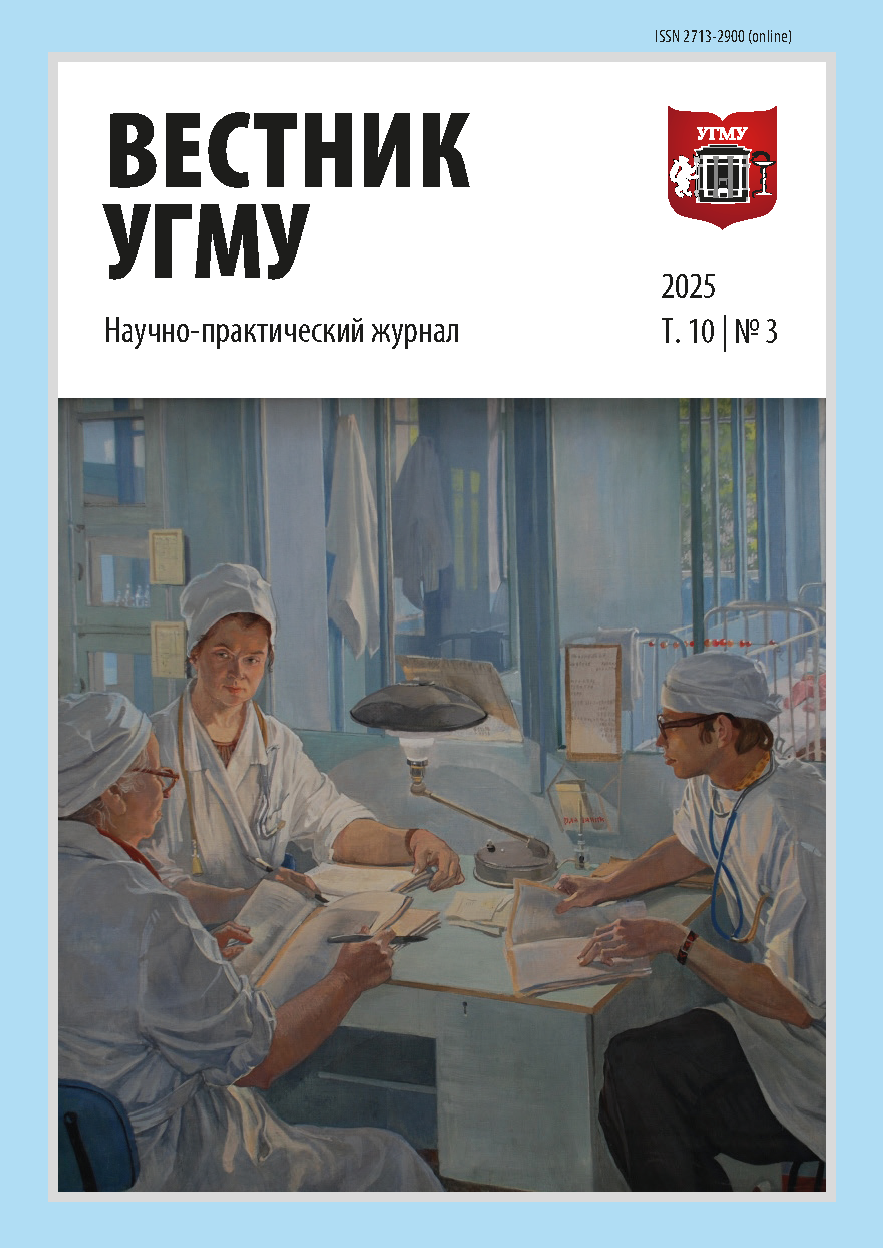Abstract
The main causes of death in children who have suffered traumatic injuries are severe traumatic brain injury (TBI) and bleeding. Hypoproconvertinemia (hereditary deficiency of blood clotting factor VII (FVII)) is an autosomal recessive disease that occurs due to a genetically determined decrease in the activity of FVII in plasma. If there is a significant deficiency of FVII (<10 %), there is a risk of hemorrhagic complications, especially in the case of injuries. TBI with compression of the brain in a child with hereditary coagulopathy is a deadly condition. It is recommended to stop or prevent bleeding in patients with hypoproconvertinemia by conducting specific replacement therapy with the following drugs: plasma coagulation factor FVII concentrate, eptacog alpha (activated) — recombinant activated FVII (rFVIIa) and prothrombin complex concentrate containing FVII. The purpose of this article is to present a rare clinical case of a favorable outcome of traumatic intracerebral hematoma in a child with congenital hypoproconvertinemia. A 2-year-old girl, who was diagnosed with hypoproconvertinemia at the age of 5 months, fell off the couch at home, did not lose consciousness, and after 48 hours she began vomiting repeatedly. The parents sought medical help 93 hours after the injury due to impaired consciousness to moderate deafness. Computed tomography revealed compression of the right temporal lobe by an intracerebral hematoma. A bone-plastic trepanation of the right parietotemporal bone, plastic surgery of the dura mater, and drainage of an intracerebral hematoma were urgently performed. The girl was in the Intensive Care Unit (ICU) for 12 days, including 5 days on mechanical ventilation. From the moment of admission to the hospital and the entire period of stay both in the ICU and in the surgical department, eptacog alpha replacement therapy and monitoring of the child’s condition by the intensive care and transfusion team were carried out. This case will be of interest to doctors of various clinical specialties and demonstrates the features of diagnosis, clinic and treatment of severe isolated TBI in a child with hypoproconvertinemia.
Acknowledgments
The authors would like to express their gratitude to the Children’s City Clinical Hospital No. 9 (Ekaterinburg), represented by Chief Physician I. P. Ogarkov, for providing opportunities for the diagnosis, treatment, and observation of the patient. We also wish to thank the Kapinos Emergency Medical Service Station (Ekaterinburg), represented by Chief Physician V. E. Ruzanov, for their advice, assistance with treatment, and monitoring.
For citation
Romanova LL, Petrosyan AA, Brazhnikov AYu, Khabarova SV. A rare clinical case of traumatic intracerebral hematoma in a child with congenital hypoproconvertinemia. USMU Medical Bulletin. 2025;10(3):e00178. (In Russ.). DOI: https://doi.org/10.52420/usmumb.10.3.e00178. EDN: https://elibrary.ru/MXPJGU.
References
Peyvandi F, Palla R, Menegatti M, Siboni SM, Halimeh S, Faeser B, et al. Coagulation factor activity and clinical bleeding severity in rare bleeding disorders: Results from the European Network of Rare Bleeding Disorders. Journal of Thrombosis and Haemostasis. 2012;10(4):615–621. DOI: https://doi.org/10.1111/j.1538-7836.2012.04653.x.
Acharya SS, Coughlin A, Dimichele DM; The North American Rare Bleeding Disorder Study Group. Rare bleeding disorder registry: Deficiencies of factors II, V, VII, X, XIII, fibrinogen and dysfibrinogenemias. Journal of Thrombosis and Haemostasis. 2004;2(2):248–256. DOI: https://doi.org/10.1111/j.1538-7836.2003.t01-1-00553.x.
Herrmann FH, Auerswald G, Ruiz-Saez A, Navarrete M, Pollmann H, Lopaciuk S, et al. Factor X deficiency: Clinical manifestation of 102 subjects from Europe and Latin America with mutations in the factor 10 gene. Haemophilia. 2006;12(5):479–489. DOI: https://doi.org/10.1111/j.1365-2516.2006.01303.x.
Herrmann FH, Wulff K, Auerswald G, Schulman S, Astermark J, Batorova A, et al. Factor VII deficiency: Clinical manifestation of 717 subjects from Europe and Latin America with mutations in the factor 7 gene. Haemophilia. 2009;15:267–280. DOI: https://doi.org/10.1111/j.1365-2516.2008.01910.x.
Ivaskevicius V, Seitz R, Kohler HP, Schroeder V, Muszbek L, Ariens RAS, et al. International registry on factor XIII deficiency: A basis formed mostly on European data. Thrombosis and Haemostasis. 2007;97(6):914–921. PMID: https://pubmed.gov/17549292.
Bernardi F, Dolce A, Pinotti M, Shapiro AD, Santagostino E, Peyvandi F, et al. Major differences in bleeding symptoms between factor VII deficiency and hemophilia B. Journal of Thrombosis and Haemostasis. 2009;7(5):774–779. DOI: https://doi.org/10.1111/j.1538-7836.2009.03329.x.
Napolitano M, Siragusa S, Mariani G. Factor VII deficiency: Clinical phenotype, genotype and therapy. Journal of Clinical Medicine. 2017;6(4):38. DOI: https://doi.org/10.3390/jcm6040038.
Batsuli G, Kouides P. Rare coagulation factor deficiencies (factors VII, X, V, and II). Hematology/Oncology Clinics of North America. 2021;35(6):1181–1196. DOI: https://doi.org/10.1016/j.hoc.2021.07.010.
Robinson KS. An overview of inherited factor VII deficiency. Transfusion and Apheresis Science. 2019;58(5):569–571. DOI: https://doi.org/10.1016/j.transci.2019.08.006.
Mumford AD, Ackroyd S, Alikhan R, Bowles L, Chowdary P, Grainger J, et al; BCSH Committee. Guideline for the diagnosis and management of the rare coagulation disorders: A United Kingdom Haemophilia Centre Doctors’ Organization guideline on behalf of the British Committee for Standards in Haematology. British Journal of Haematology. 2014;167(3):304–326. DOI: https://doi.org/10.1111/bjh.13058.
Коновалов АН, Лихтерман ЛБ, Потапов АА (ред.). Нейротравматология. Справочник. Москва: Феникс; 1999. 576 с. [Konovalov AN, Likhterman LB, Potapov AA (eds.). Neurotraumatology. Guide. Moscow: Feniks; 1994. 576 p. (In Russ.)]. Available from: https://clck.ru/3NsdFK (accessed 25 June 2025).
Орлов ЮА. Руководство по диагностике и лечению черепномозговой травмы у детей. Киев; 2002. 160 c. [Orlov YuA. Guidelines for the diagnosis and treatment of traumatic brain injury in children. Kiev; 2002. 160 p. (In Russ.)]. Available from: https://clck.ru/3NsdUj (accessed 25 June 2025).
Grieve J. Head injury, pathophysiology and management, second edition. Journal of Neurology, Neurosurgery & Psychiatry. 2006;77:710. DOI: https://doi.org/10.1136/jnnp.2005.071902.
Kochanek PM, Tasker RC, Carney N, Totten AM, Adelson PD, Selden NR, et al. Guidelines for the management of pediatric severe traumatic brain injury, third edition: Update of the brain trauma foundation guidelines, executive summary. Neurosurgery. 2019;84(6):1169–1178. DOI: https://doi.org/10.1093/neuros/nyz051.
This work is licensed under a Creative Commons Attribution-NonCommercial-ShareAlike 4.0 International License
Copyright © 2025 Romanova L. L., Petrosyan A. A., Brazhnikov A. Yu., Khabarova S. V.





